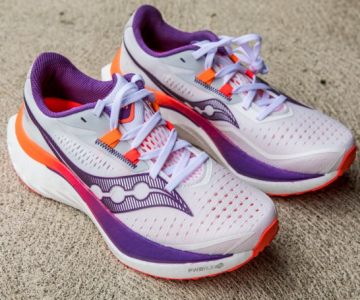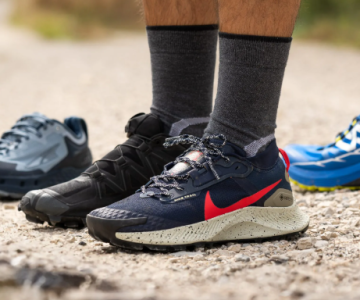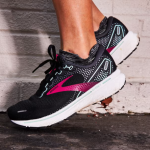Your foot structure plays a crucial role in your running efficiency and injury prevention. Variations such as flat feet, high arches, and broad feet can affect your biomechanics, including how forces are distributed during each stride. Understanding these differences is essential to selecting the right shoes that can enhance performance and reduce the risk of injury.
Flat Feet (Pes Planus)
Flat feet, or pes planus, occur when the arch of the foot collapses, causing the entire sole to make contact with the ground. This condition can be congenital or develop over time due to factors such as aging, injury, or prolonged stress. While having flat feet doesn’t automatically mean you’ll experience overpronation, it can increase the likelihood, leading to specific biomechanical implications.
Biomechanical Considerations:
- Overpronation: Flat feet often lead to overpronation, where the foot rolls excessively inward during the gait cycle.
- Altered Load Distribution: This can increase stress on the foot’s medial structures and the lower limbs.
- Muscle Fatigue: The body works harder to stabilize the foot, leading to fatigue and injury.
- Joint Stress: Overpronation can cause misalignment, putting strain on the knees and hips.
Injury Risks: Overpronation linked with flat feet can increase the risk of:
- Plantar Fasciitis: Inflammation in the heel caused by overstretching the plantar fascia.
- Shin Splints: Pain along the shin due to repetitive stress.
- Knee Pain: Misalignment may lead to knee issues such as patellofemoral pain syndrome.
Footwear Recommendations: For runners with flat feet or overpronation, consider shoes with:
- Stability or Motion Control: These shoes offer additional medial support to control inward foot roll.
- Arch Support: Built-in or custom orthotics can help maintain proper alignment.
- Cushioning: Adequate shock absorption helps reduce joint stress.
Top recommendations for overpronation:
- Brooks Adrenaline GTS 24: Excellent for stability with GuideRails technology.
- New Balance 860v14: Offers dual-density midsole support for controlling overpronation.
- Saucony Guide 18: Lightweight with midsole geometry that guides the foot into a neutral position.
- Mizuno Wave Inspire 20: Uses Wave technology to reduce overpronation while providing solid cushioning.
High Arches (Pes Cavus)
High arches, or pes cavus, occur when the medial longitudinal arch is excessively elevated. This condition is often rigid, which can lead to underpronation or supination, where the foot rolls outward during the gait cycle.
Biomechanical Considerations:
- Underpronation (Supination): High arches often result in insufficient inward roll, which means the foot doesn’t absorb shock effectively.
- Reduced Shock Absorption: This limited motion prevents the foot from properly absorbing impact.
- Increased Pressure: More stress is placed on the lateral side of the foot, leading to discomfort.
- Stiffness: A rigid foot structure can make it harder to adapt to varying terrains.
Injury Risks: Supination in high arches can increase the risk of:
- Stress Fractures: Concentrated pressure on specific areas may cause fractures.
- Ankle Sprains: Lack of stability can lead to rolling the ankle.
- Plantar Fasciitis: The tight plantar fascia may become inflamed due to lack of flexibility.
Footwear Recommendations: For runners with high arches:
- Cushioned Shoes: Enhanced cushioning can help compensate for the foot’s natural lack of shock absorption.
- Flexible Midsoles: Help the foot move more naturally and aid in creating neutral pronation.
- Neutral Support: Avoid shoes with too much motion control that could limit foot movement.
Recommended options include:
- New Balance 1080v14: Offers soft cushioning and flexibility to help neutralize supination.
- Saucony Triumph 22: Soft midsole foam provides cushioning while improving foot alignment.
- HOKA Clifton 10: Well-cushioned and flexible to aid in neutralizing rigid foot motion.
- Brooks Adrenaline GTS 24: Though a stability shoe, its GuideRails system helps bring the foot into a neutral position.
Broad or Wider Feet
Broad feet require extra space in the forefoot and toe box areas, which may be an anatomical variation or the result of factors like weight gain or pregnancy. While not directly related to pronation, broad feet can cause discomfort if not accommodated properly.
Biomechanical Considerations:
- Toe Compression: Ill-fitting shoes can cause blisters, bunions, and hammertoes.
- Altered Gait: Discomfort can lead to compensatory movements that affect running form.
- Reduced Stability: Tight shoes can affect balance, especially if they’re not wide enough.
Injury Risks:
- Metatarsalgia: Pain in the ball of the foot due to excessive pressure.
- Neuromas: Nerve irritation caused by tight shoes.
- Calluses and Blisters: Friction from improper fit can lead to painful skin conditions.
Footwear Recommendations: For runners with broad feet:
- Wide Toe Box Shoes: Choose shoes with extra space to prevent compression.
- Custom Fit Options: Look for brands that offer multiple width options for a better fit.
- Minimal Overlays: Reduces pressure points on the foot.
Top picks for wider feet:
- Brooks Ghost 16: Available in various widths and provides a comfortable fit with plenty of room in the forefoot.
- New Balance Fresh Foam 1080: Known for its roomy toe box and comfortable fit.
- Saucony Triumph 22: Offers a flexible midsole and ample space for wider feet.
- HOKA Clifton 10: Known for cushioning and a broad platform to support wider foot shapes.
The Role of Pronation in Running
Pronation refers to the natural inward roll of the foot during running, helping to absorb shock and propel you forward. There are three main types of pronation:
- Neutral Pronation: The foot rolls inward slightly for shock absorption with even weight distribution.
- Overpronation: The foot rolls excessively inward, which can lead to various injuries.
- Underpronation (Supination): The foot doesn’t roll inward enough, putting excessive strain on the outside of the foot.
Understanding your pronation type is essential for choosing the right shoe and preventing injury. Research suggests that runners with overpronation may benefit from motion control shoes, which provide added stability and help reduce injury risk.
Conclusion
Understanding your foot type—whether it’s flat feet, high arches, or broad feet—is key to selecting the right running shoes for optimal performance and injury prevention. By choosing footwear designed to address your specific biomechanics, you can run more comfortably and efficiently while minimizing the risk of injuries. Don’t hesitate to visit a specialty running store or consult a medical professional to ensure you’re selecting the best shoes for your feet.





